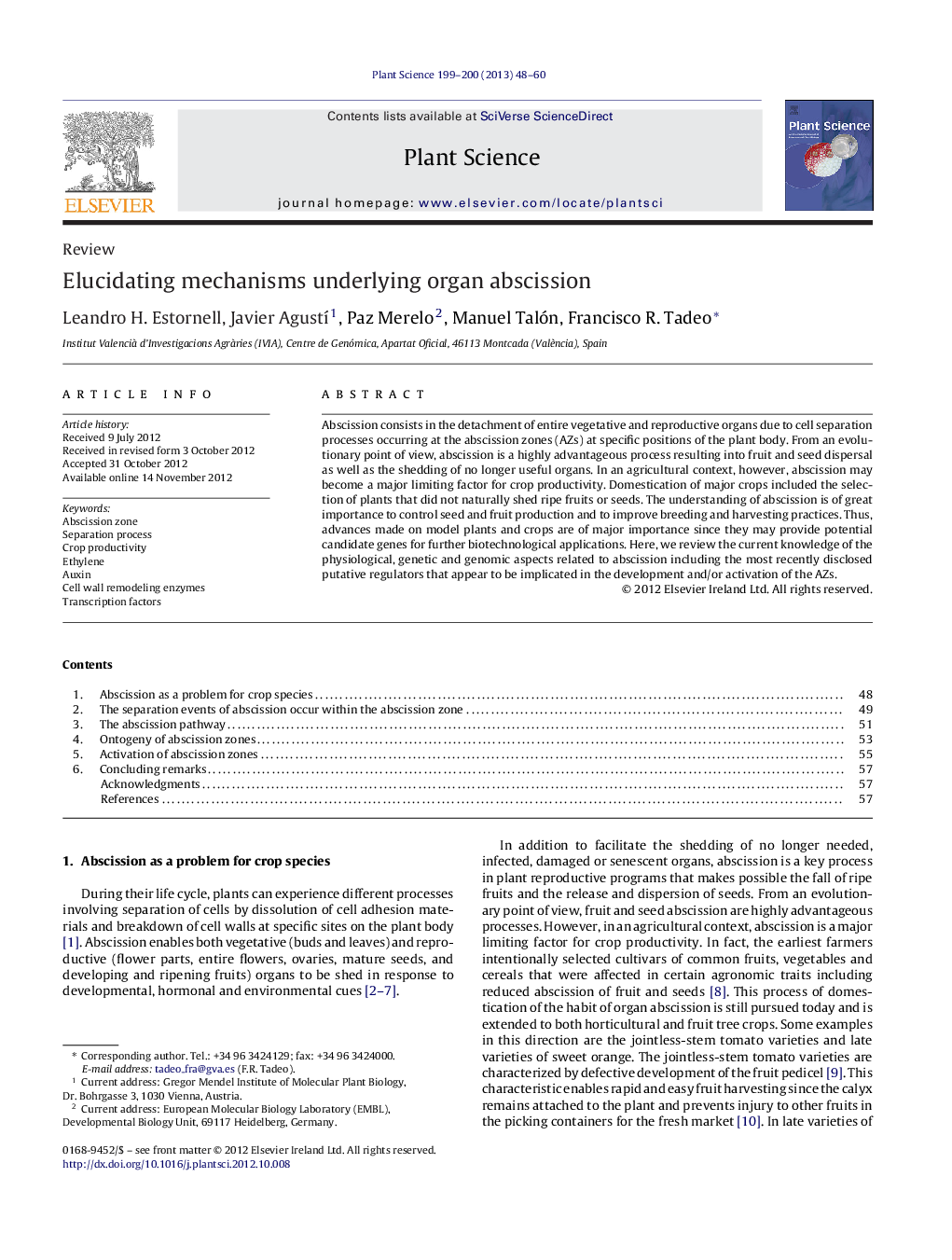| Article ID | Journal | Published Year | Pages | File Type |
|---|---|---|---|---|
| 2017328 | Plant Science | 2013 | 13 Pages |
Abscission consists in the detachment of entire vegetative and reproductive organs due to cell separation processes occurring at the abscission zones (AZs) at specific positions of the plant body. From an evolutionary point of view, abscission is a highly advantageous process resulting into fruit and seed dispersal as well as the shedding of no longer useful organs. In an agricultural context, however, abscission may become a major limiting factor for crop productivity. Domestication of major crops included the selection of plants that did not naturally shed ripe fruits or seeds. The understanding of abscission is of great importance to control seed and fruit production and to improve breeding and harvesting practices. Thus, advances made on model plants and crops are of major importance since they may provide potential candidate genes for further biotechnological applications. Here, we review the current knowledge of the physiological, genetic and genomic aspects related to abscission including the most recently disclosed putative regulators that appear to be implicated in the development and/or activation of the AZs.
► Abscission is introduced as a production-limiting factor for crop species. ► An anatomical description of the abscission zone (AZ) is provided and divergences in AZ location among species are discussed. ► A description of the abscission process and the role in abscission of the major plant hormones is provided. ► Current knowledge regarding the molecular factors that take part in the ontogeny and activation of the AZ is discussed. ► Divergences between abscission in Arabidopsis and crop species are discussed.
